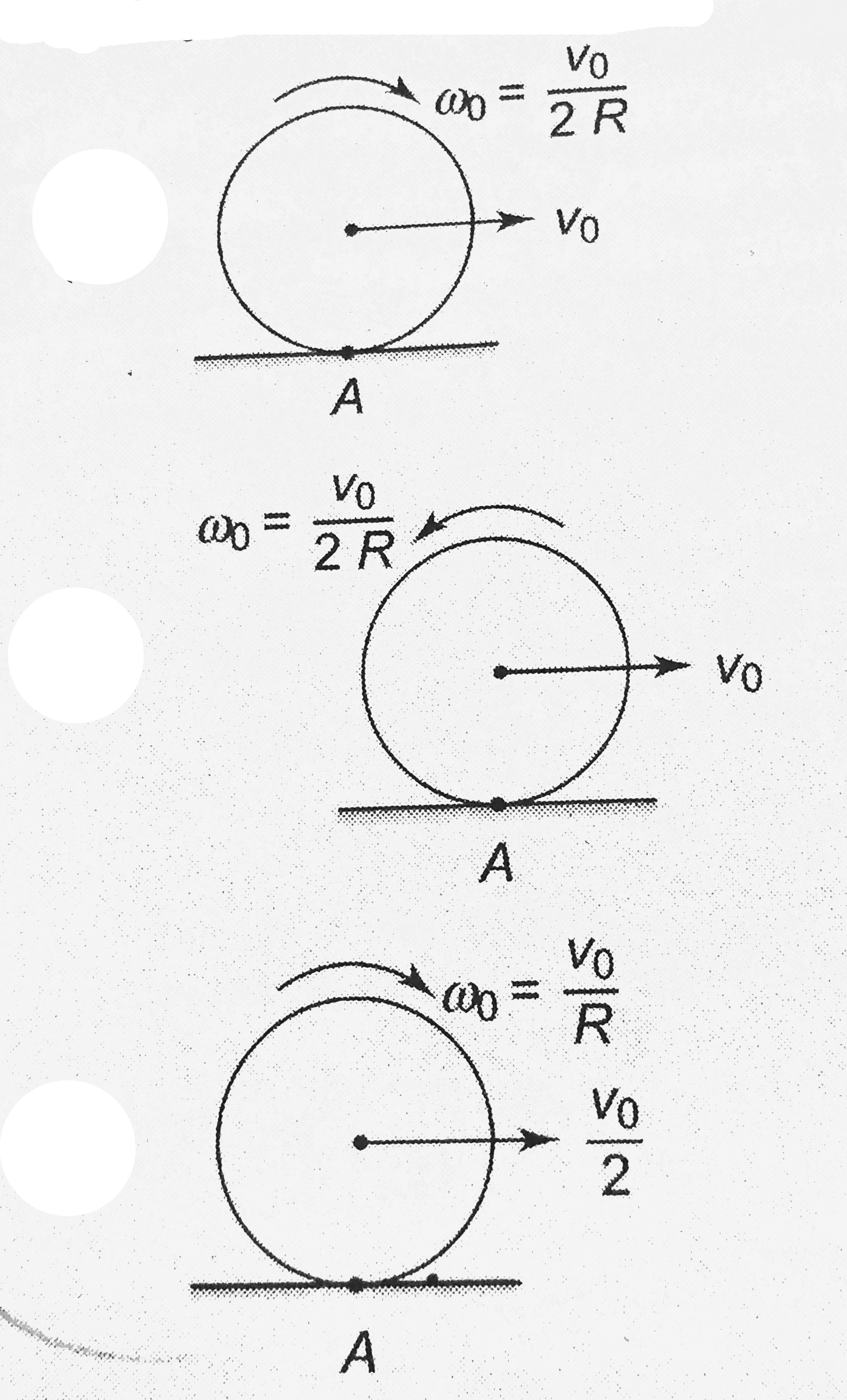Discuss how the rolling is the combination of translational and rotational and also possibilities of velocity of different points in pure rolling, Solution in Tamil
The rolling motion is the most commonly observed motion in daily life. The motion wheel is an example of rolling motion. Round objects like ring, disc, sphere etc. are in suitable for rolling. Let us study the rolling of a disc on a horizontal surface. Consider point P on the edge of the disc. While rolling the point undergoes translational motion along with its center of mass and rotational motion with respect to its center of mass. Cycloid path followed.

Combination of Translation and Rotation: We will now see how these translational and rotational motions are related in rolling. If the radius of the rolling object is R, in one full rotation, the center of mass is displaced by 2πR (its circumference). One would agree that not only the center of mass, but all the points on the disc are displaced by the same 2eR after one full rotation. The only difference is that the center of mass takes a straight path, but, all the other points undergo a path which has a combination of the translational and rotational motion. Especially the point on the edge undergoes a path of a cycloid as shown in the figure.
As the center of mass takes only a straight line path, its velocity VCM is only translational velocity VTRANS(VCM=vTRANS). All the other points have two velocities. One is the translational velocity vTRANS (which is also the velocity of center of mass) and the other is the rotational velocity vROT(vROT=rω). Here, r is the distance of the point from the center of mass and ω is the angular velocity. The rotational velocity vROT is perpendicular to the instantaneous position vector from the center of mass as shown in figure (a). The resultant of these two velocities is v. This resultant velocity v is perpendicular to the position vector from the point of contact of the rolling object with the surface on which it is rolling as shown in figure (b).

We shall now give importance to the point of contact. In pure rolling, the point of the rolling object which comes in contact with the surface is at momentary rest. This is the case with every point that is on the edge of the rolling object. As the rolling proceeds, all the points on the edge, one by one come in contact with the surface, remain at momentary rest at the time of contact and then take the path of the cycloid as already mentioned Hence, we can consider the pure rolling in two different ways.
(i) The combination of translational motion and rotational motion about the center of mass.
(or)
(ii) The momentary rotational motion about the point of contact.
As the point of contact is at momentary rest in pure rolling, its resultant velocity v is Zem (v=0). For example, in figure, at the point of contact, VTRANS is forward to right and vROT is backwards to the left).

That implies that vTRANSandVROT are equal in magnitude and opposite in direction =VTRANS−vROT=0). Hence, we conclude that in pure rolling, for all the points on the edge, the magnitudes of vTRANSandvROT are equal (VTRANS=VROT) As vTRANS=vCMandvROT=Rω in pure rolling we have,
VCM=Rω
We should remember the special feature of the above equation. In rotational motion, as per the relation v=rω, the center point will not have any velocity asr is zero. But in rolling motion, it suggests that the center point has a velocity VCM given by above equation VCM−RomegA.
For the topmost point, the two velocities VTRANSandandVROT are equal in magnitude and in the same direction (to the right). Thus, the resultant velocity v is the sum of these two velocities, v=vTRANS+vROT In other form, v=2vCM as shown in figure below. Velocity of different continue rollin

Related Playlists
- BOOK - FULL MARKSCHAPTER - MOTION OF SYSTEM OF PARTICLES AND RIGID BODIESEXERCISE - ADDITIONAL QUESTIONS SOLVED - III (NUMERICALS)12videos
MOTION OF SYSTEM OF PARTICLES AND RIGID BODIES
- BOOK - FULL MARKSCHAPTER - LAW OF MOTION EXERCISE - ADDITIONAL QUESTIONS SOLVED (SHORT ANSWER QUESTIONS (3 MARKS & NUMERICALS))16videos
LAW OF MOTION
- BOOK - FULL MARKSCHAPTER - NATURE OF PHYSICAL WORLD AND MEASUREMENT EXERCISE - ADDITIONAL QUESTIONS SOLVED ( SHORT ANSWER QUESTIONS (2 MARK))20videos
NATURE OF PHYSICAL WORLD AND MEASUREMENT
Similar Questions
Three masses 3 kg 4 kg and 5 kg are located at the comers of an equilateral triangle of side 1 m. Locate the centre of mass of the system.
11:40View SolutionA block of mass 500 g is at rest on a horizontal table. What steady force is required to give the block a velocity of 200cms−1 in 4 s?
04:53View SolutionThe vernier scale of a travelling microscope has 50 divisions which coincide with 49 main scale divisions. If each main scale division is 0.5 mm. Calculate the minimum inaccuracy in the measurement of distance.
16:04View SolutionConsider a hollow sphere rolling with slipping with velocities as shown. Find the translational velocity after the hollow sphere starts pure rolling.
(a)
(b)
(c ) 12:03View Solution
12:03View SolutionWhat is the condition for pure rolling ?
15:14View SolutionRotational Motion - Pure Rolling
01:46View SolutionRotational Motion - Pure Rolling Problems
01:46View SolutionRotational Motion - Pure Rolling Problems (2)
03:38View SolutionIn pure rolling, the velocity at the point of contact:
02:04View SolutionIn pure rolling, the velocity at the point of contact:
02:21View SolutionIf a sphere is rolling, the ratio of translational energy to total kinetic energy is given by:
06:39View SolutionIn pure rolling, rotational velocity of points at its edges is equal to
01:14:41View SolutionWhen a solid sphere is undergoing pure rolling, the ratio of translational kinetic energy to rotational kinetic energy is
59:57View SolutionFor a rolling hollow sphere find the relation, Translational K.E.: Rotational K.E.: Total K.E. Also find what percentage of total is translational and rotational
45:29View SolutionCombined Translational and Rotational Motion||Rolling
31:41View Solution

